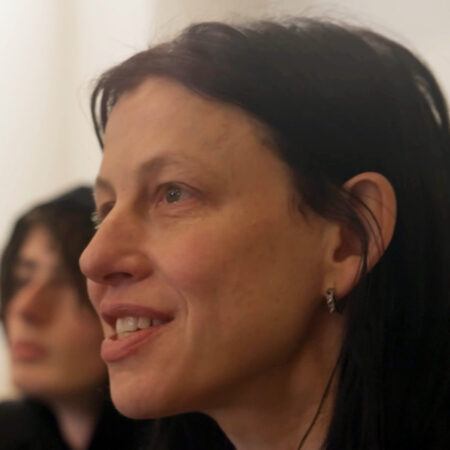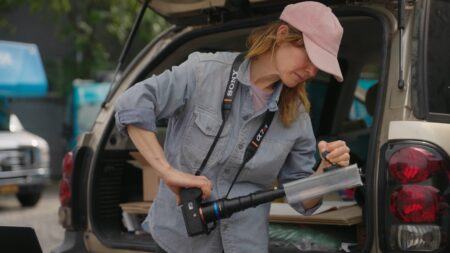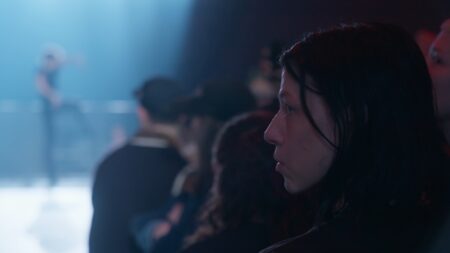Anne Imhof

Anne Imhof, born in 1978 in Giessen, Germany, and lives and works between Berlin, Germany, and New York, New York. She earned her BA from the University of Art and Design, Offenbach in 2003, and her MFA from the State Academy of Fine Arts, Städelschule, Frankfurt a.M. in 2012. Imhof uses performance, sculpture, painting, drawing, installation, and music to examine the codes of cultural identities and social hierarchies. Through her practice, she explores themes of belonging, spectatorship, and alienation while heightening the everyday performance of self, subculture, and identity.
In performances and exhibitions, Imhof investigates the subtle and specific gestures and choreographies that we use to communicate and how these reflect our cultures and identities. In Aqua Leo, 1st of at least two (2013), Imhof dramatizes scenes of social life, turning the rituals of nightlife used to determine who is “in” and who is “out” into a performance of minimal task-based gestures. In DEAL (2015), she dissects the imperceptible choreographies of negotiation and power exchange, combining performance, video, painting, and etching to reflect on the rules and gestures that underpin the social and economic exchanges that make up daily life. In her 2024 exhibition, Wish You Were Gay at the Kunsthaus Bregenz, Imhof continues to explore themes of conformity and identity through billboards, oil paintings, sculptural installations, and video works made using archival footage. Revisiting early moments in her career and the struggles of being a young queer mother, Imhof examines the disjunction between private vulnerability and public persona, and how these formative experiences are physically inscribed and performed. Through her performances and installations, the artist highlights how identity, experience, and culture are expressed through the body.
In her work, Imhof creates immersive environments that audiences move through freely, disrupting hierarchies between live performance and documentation while destabilizing traditional modes of experiencing performance. Non-linear and non-centralized, DOOM: House of Hope (2025) loosely follows the plot of Romeo and Juliet, inviting audience members to create their own experience of the work as they explore different scenes and spaces during the three-hour performance. Hanging above the performance is a Jumbotron streaming a live feed following various performers over the course of the show, creating a simultaneous experience of both the live performance and its documentation, challenging traditional notions of authenticity and spectatorship. In Imhof’s 2017 performance Faust, audience members and performers both occupy an architectural environment of glass platforms, barriers, raised plinths, and wire fences, filled with handcuffs, chains, Doberman Pinchers, a leather mattress, and a live fire. The carefully constructed, often confrontational, space amplifies the performance’s themes of control, hierarchy, and domination. The space itself is demonstrative of how Imhof synthesizes disparate media, from architecture to sound to living bodies in order to create critical examinations of power dynamics. Across her practice, the artist creates works that are both deeply vulnerable and highly artificial, mapping the complex terrain of human behavior through her reproduction of social choreographies and codes.
“‘Doom’ is about vulnerability in a generation. Youth has that vulnerability.”
Anne Imhof

